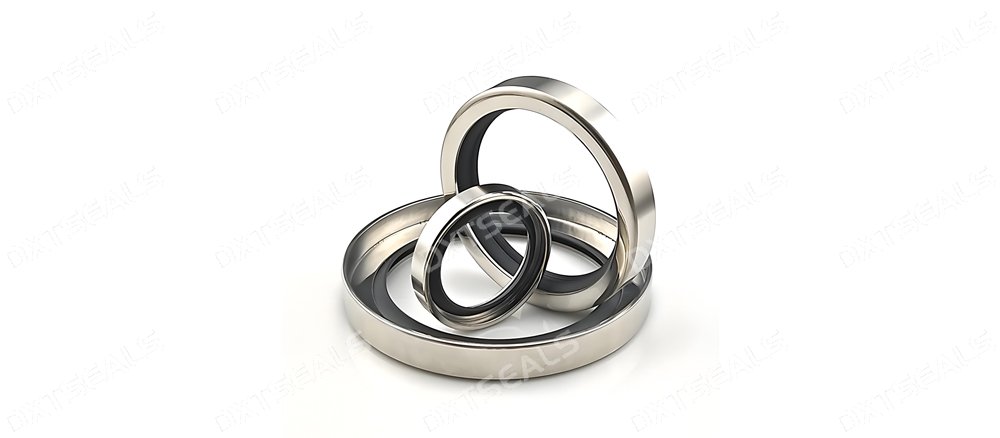
Shaft seals, also known as rotary shaft seals or oil seals, play a vital role in protecting rotating machinery from fluid leakage, dirt ingress, and bearing damage. However, seal failure is a leading cause of equipment downtime across industries. Understanding the root causes of shaft seal failure—and how to prevent them—can extend equipment life and reduce maintenance costs.
At DXTSEALS, we specialize in high-performance sealing solutions. Here, we break down the top causes of shaft seal failure and offer practical prevention strategies.
🔧 1. Improper Installation
One of the most frequent causes of premature seal failure is incorrect installation. This includes:
-
Misaligned or tilted seals
-
Damaged seal lips during assembly
-
Over-tightening or improper insertion tools
Prevention Tips:
-
Always use dedicated seal installation tools
-
Ensure shafts and housings are clean, burr-free, and properly lubricated
-
Follow manufacturer alignment and seating guidelines
✅ DXTSEALS provides custom installation support and guidance to ensure seal integrity from day one.
🌡️ 2. Temperature Extremes
Running seals outside their material temperature limits can lead to:
-
Hardening and cracking
-
Loss of elasticity
-
Material degradation
Typical Failures:
-
NBR hardens at high temperatures
-
Silicone or PTFE are better for extreme ranges
Prevention Tips:
-
Match seal materials to actual system temperatures
-
Consider using FKM or PTFE for high-temperature applications
🔍 DXTSEALS offers a wide range of heat-resistant materials suitable for demanding environments.
💧 3. Media Incompatibility
Chemical attack or swelling can result from using a seal material that is not compatible with the system fluid.
Examples:
-
Nitrile rubber swelling in synthetic oils
-
Silicone degradation from fuel exposure
Prevention Tips:
-
Identify all chemicals the seal will contact
-
Choose seal materials tested and proven for media compatibility
🧪 Our engineers at DXTSEALS will help you select the optimal elastomer or composite.
⚙️ 4. Shaft Surface Issues
The shaft surface directly affects the seal’s performance. Common problems include:
-
Rough or scratched shaft finish
-
Shaft misalignment or runout
-
Incorrect hardness or improper surface coatings
Prevention Tips:
-
Maintain a surface finish of 0.2–0.8 µm Ra
-
Use hardened shafts to minimize wear
-
Avoid grooves or burrs
🛠️ DXTSEALS offers precision-matching solutions for various shaft conditions.
💨 5. Contamination & Dirt Ingress
External dirt, dust, and particles can destroy seal lips and cause rapid wear or leakage.
Sources of Contamination:
-
Lack of dust lips or secondary seals
-
Operation in harsh or unfiltered environments
Prevention Tips:
-
Use double-lip or cassette seals for dusty conditions
-
Install protective covers or wipers when necessary
🧱 DXTSEALS provides dust-proof and environment-specific sealing designs.
📈 6. Pressure Exceeding Seal Limits
Standard shaft seals are not designed for high-pressure environments. If pressure builds up:
-
Seals can blow out or distort
-
Leakage or lip damage may occur
Prevention Tips:
-
Choose pressure-resistant seals
-
Add support rings or pressure-relief features
💡 DXTSEALS manufactures high-pressure shaft seals for hydraulic and heavy-duty equipment.
🔍 Conclusion: Proactive Measures Save Time and Cost
Preventing shaft seal failure is a matter of proactive design, correct material selection, and proper installation. Key preventive strategies include:
-
Match the seal material to temperature and fluid conditions
-
Ensure the shaft and housing meet finish and alignment standards
-
Choose seal types appropriate for the pressure and contamination level
-
Install carefully using correct tools and lubrication
At DXTSEALS, we deliver precision-engineered sealing solutions for even the most challenging industrial applications. Our team helps you choose the right seal—and helps you keep it working longer.
🔗 Visit www.dxtseals.com to explore our range of custom and standard shaft seals, or contact our engineers for expert technical support.
